Here are some of the apps that I think change the way that students will expect information to be presented in the future. App developers will need to factor in some or all of these elements in order to fully engage a student population who are increasingly sophisticated in their visual literacies.
What other apps would you add to this list? Please contribute your own suggestions in the comments section.
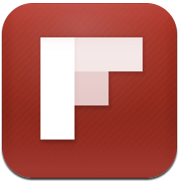
Flipboard:
Flipboard offers a simple way for publishers to automatically render content in a beautiful, engaging layout on the iPad. When an article is shared on Twitter or Facebook, a Flipboard user can simply double-tap while browsing a section to get a delightful magazine-style reading experience. This creates a comfortable accessible way to read mass mounts of information from multiple sources.
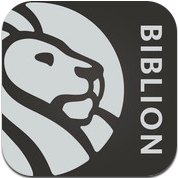 NYPL Biblion:
NYPL Biblion:This app is designed to take you into the Library's legendary stacks, opening up hidden parts of the collections and the myriad story lines they hold and preserve. In this app you will hold documents, images, films, audio, and essays directly from the collections. With Biblion, you can jump from stack to story, as you move through the infoscape of the World's Fair, created directly from NYPL's collection.
http://itunes.apple.com/au/app/nypl-biblion-worlds-fair/id433418206?mt=8
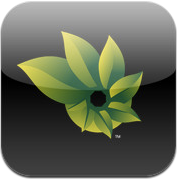 PhotoSynth:
PhotoSynth:Photosynth is an app from Microsoft Live Labs and the University of Washington that analyzes digital photographs and generates a three-dimensional model of the photos. It stitches all the photographs together to create an environment in which you can navigate. This is a great tool for creating virtual excursions or virtual environments.
http://itunes.apple.com/au/app/photosynth/id430065256?mt=8
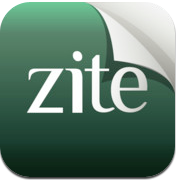 Zite:
Zite:Zite is similar to Flipboard. It provide content that is provided by your twitter or RSS feeds. Users can set up different chapters or areas of interest. This would be ideal if you were doing a collaborative project. Each group could produce a chapter within your book by retweeting the relevant information they identify. It is a great way to quickly produce an e-book that is specifically designed for your unit.
http://itunes.apple.com/au/app/zite-personalized-magazine/id419752338?mt=8
 Starwalk:
Starwalk:Star Walk allows users to locate and identify objects in the sky. The touch control star map displays constellations, stars, planets, satellites, and galaxies currently overhead. The latest updates include a Spectrum Bar, Augmented Reality and World Map of users. The stunningly beautiful graphics makes this one a winner. Love to see this type of coding applied to other subject areas.
http://itunes.apple.com/au/app/star-walk-5-stars-astronomy/id295430577?mt=8
 WikiNodes:
WikiNodes:Wikinodes is for accesings information from Wikipedia. Once identified articles are displayed as nodes that you can touch, drag, and spin around. Tap any node, and it expands to give you more information. Or, switch to a full-page view to display articles as pages, then scroll up and down. Nodes link together sections of Wikipedia articles and related topics, making it easy for you to make links.
http://itunes.apple.com/au/app/wikinodes/id433834594?mt=8
Dropbox lets you bring all your photos, docs, and videos from any device to your current device. After you install Dropbox on your devices, any file you save to your Dropbox will automatically save to all your devices, your iPhone and iPad and even the Dropbox website! With the Dropbox app, you can take everything that matters to you on the go. Easily allows files to be transferred across platform.
http://itunes.apple.com/au/app/dropbox/id327630330?mt=8
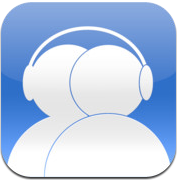 Pairshare:
Pairshare:Pairshare is an app designed to share music. Users simply create a “Sharelist” and use the app’s auto scan feature to find nearby friends to stream music with. But what if instead of music you were sharing podcasts or lesson saved as podcasts. Both users can view the Sharelist, album art and file information, and can also switch back and forth between Sharelists. This could be great in schools.
http://itunes.apple.com/au/app/pairshare/id424429744?mt=8
 Qwiki:
Qwiki:Qwiki combines thousands of sources to present concise, interactive summaries. Explore topics by searching or browse a worldwide map highlighting landmarks, monuments and cities. The beauty of this app is that it actually caters for multiple Learning Styles - it presents the information in both a visual and auditory way but it also creates a narrative easy for students to understand and remember.
http://itunes.apple.com/au/app/qwiki/id373717412?mt=8
Fring lets users enjoy Group Video chat, 2-way video chat, voice and text chat. Fring has released an iPad optimized version of their app that can do 4-way video calling. The screen is cut in 4 so you can see everyone. You can make the video calls over 3G or WiFi and Fring is a multi platform app. You can use it to talk and video chat with your friends even if they have an Android device.
http://itunes.apple.com/au/app/fring/id290948830?mt=8
http://itunes.apple.com/au/app/fring/id290948830?mt=8

Those are good and useful apps that shows another way of learning things. Have tried using 3 from the list.
ReplyDeleteAmy
Your blog provided us valuable details to work with . Each & every tips of your posting are magnificent.
ReplyDelete